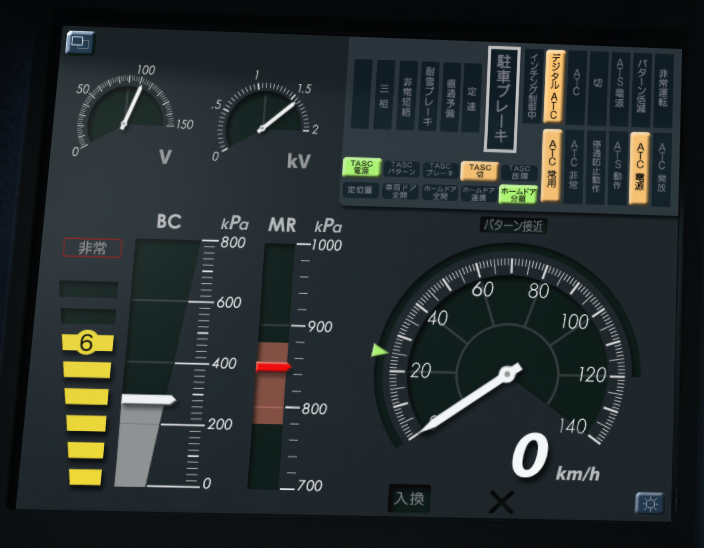E233 series
 (By MaedaAkihiko - CC BY-SA 4.0)
(By MaedaAkihiko - CC BY-SA 4.0)
Introducing
The E233 series (E233系, E233-kei) is a type of self-propelled trainset operated by the East Japan Railway Company (JR East) on several rail lines in Greater Tokyo.
The E231 series, which was launched in large numbers in the Tokyo metropolitan area from 1999, was developed as the main model representing JR East. It came in several versions. However, from 2005 onwards, an evolution of the equipment was necessary. The E233 Series will incorporate the technology evolutions since the last E231 (-1000) series released a few years earlier.
The E233 Series was unveiled by JR East in October 2005 as the replacement for the 201 Series on the Chūō, Ōme and Itsukaichi lines. The first trainset entered commercial service on December 26, 2006.
Eventually the E233 series will replace a lot of older equipment and lead to the shifting of assignments of moderately old equipment.
Console detail
Apart from the pocket watch and the door-closing indicator in the center of the console, there are 2 displays: one for instruments info and the other is the MON/TIMS/INTEROS screen.
The train instruments screen displays electrical voltages and various indicators at the top that changes according to the line (see below).
The bottom area contains:
- Brake level and indicators for emergency brake in red (非常) and speed limit in green (抑速) if available.
- Brake cylinder pressure (BC)
- Main air reservoir pressure (MR). Note that if this falls below the red zone (780kPa), the compressor starts up.
- Speed dial, with speed limit (on D-ATC/ATACS).
Keihin-Tohoku / Negishi line

|
|
|
|
Saikyo line (ATACS)
 One of the special features of this line is that the security system changes twice during the journey. There is an ATS-P -> ATACS passage at Ikebukuro station and an ATACS -> ATS-P passage at Omiya station.
One of the special features of this line is that the security system changes twice during the journey. There is an ATS-P -> ATACS passage at Ikebukuro station and an ATACS -> ATS-P passage at Omiya station.
So, here are the translations of the indicators, when ATACS is the safety system:
|
|
Other lines

The top line of indicators are those for ATS-P. Here are the translations of the bottom line:
-
3-phases (三相)
-
Emergency short-circuit (非常短絡)
-
Snow resistant brakes (耐雪ブレーキ)
-
Safety Brakes (直通予備)
-
Cruise control (定速)
-
Parking brakes (駐車ブレーキ)
Availability
This model is available on these lines:
- Keihin-Tohoku / Negishi line (E233-1000 version)
- Tokaido line (E233-3000 version)
- Chūō line (E233-0 version)
- Saikyo-Kawagoe line (E233-7000 version)
- Keiyo line (E233-5000 version)
- Nambu line (E233-8000 version)
- Takasaki line (E233-3000 version)
- Utsunomiya line (E233-3000 version)
- Ōme line (E233-0 version)
